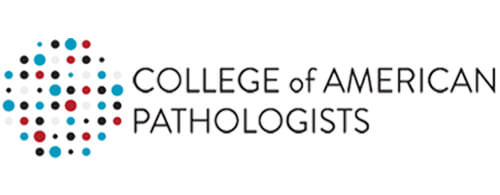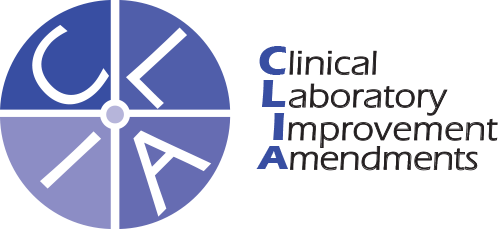Our Accreditations




Chlamydia and gonorrhea are two common STDs that can infect both men and women. However, most infected individuals do not show any symptoms. Take this at-home STD test to find out if you may need treatment.
___
STDs tested:
![]() Chlamydia
Chlamydia
![]() Gonorrhea
Gonorrhea
$49.00
Chlamydia and gonorrhea are common sexually transmitted diseases (STDs) caused by bacterial infections. They are transmitted through sexual contact with the penis, vagina, mouth, or anus of an infected individual. These STDs can also be transmitted from a mother with an untreated infection to her newborn during childbirth, increasing the risk of chlamydial conjunctivitis and pneumonia, and gonorrhea-associated eye infections and sepsis.
Although many infected individuals do not show any symptoms, untreated chlamydial and gonorrheal infections can lead to serious health complications. In females, pelvic inflammatory disease (PID), and PID-associated infertility, ectopic pregnancy, and chronic pelvic pain can occur. Untreated chlamydia during pregnancy has been associated with preterm delivery, and untreated gonorrhea during pregnancy increases the risk of miscarriage and inflammation of the lining of the uterus.
Complications in untreated males can include epididymitis, sterility, and prostatis. Other potential complications include gonococcal bacteremia, pharyngitis, and reactive arthritis. Chlamydial and gonorrheal infections also facilitate the transmission of HIV infection.
You should consider getting tested if:
If you suspect that you have been exposed to chlamydia or gonorrhea, be aware that there is a “window period” of around two weeks where laboratory assays are unable to detect bacteria that cause these two common STDs.
CDC recommendations for testing:
Endocervical bleeding
Increased urinary frequency
Rectal pain, swelling & bleeding
Painful urination
Vaginal discharge
Testicular pain & swelling
Increased urinary frequency
Rectal pain, swelling & bleeding
Painful urination
Urethral discharge
• Chlamydia
Chlamydia is a STD caused by the bacteria Chlamydia trachomatis. It is the most commonly reported bacterial infection worldwide. Chlamydia is most common among people between the ages of 15 to 24. Approximately 1 in 20 sexually active young women (aged 14 to 24) has chlamydia. It is also common among men who have sex with men.
• Gonorrhea
Gonorrhoeae is a STD caused by the bacteria Neisseria gonorrhoeae. It affects the layer of cells that lines the reproductive tract (the mucous membranes). In women, gonorrhea infections can affect the cervix, uterus and the fallopian tubes. In men, the infection affects the urethra. This bacterium can also infect the mucous membrane of mouth, eyes and the rectum.
Choose the test that matches your need from our large array of tests. The kit will be delivered to your doorstep. There is no need to leave the comfort of your home.
Register and activate your test. Collect your sample. Return your sample to our lab as soon as possible, using the prepaid envelope included in the kit.
Your sample will be tested as soon as it arrives in our lab. Your results will be available through our secure online platform.
Here are the answers to the most frequently asked questions about this test. Please feel free to contact us if you have any other questions.
To take a urine sample, use the Annual testing is recommended by the CDC for individuals aged 25 years and younger, and also those over 25 years who have risk factors for chlamydia and gonorrhea (e.g. multiple sexual partners or a new sexual partner). The CDC also recommends chlamydia screening test in all pregnant women.
Chlamydia and gonorrhea are common STDs, particularly among young individuals, but many infected individuals remain asymptomatic. Testing is simple and non-invasive. Treatment is simple and effective and will prevent any complications associated with these STDs.
Yes. Although antibiotic treatment is effective for the current bacterial infection, it does not prevent future infections through exposure to an infected individual.
Contact a health professional to begin a course of prescribed antibiotics as soon as possible. Abstain from sexual contact until the completion of the antibiotic course. Ensure that any recent sexual partners are aware of your diagnosis so they can also request testing.
Chlamydia is easily treated with antibiotics. Gonorrhea is easily treated with dual antibiotics. If your test is positive, talk to your healthcare provider. Refrain from sexual activity until your antibiotic course is completed. If your symptoms do not subside after a few days of taking antibiotics, visit your healthcare provider.
It is important to complete your antibiotic treatment, since inappropriately treated partners can pass on the disease. Repeat infections are common, particularly in women. Multiple infections in women can lead to reproductive complications.
Avoiding vaginal, rectal or oral sex is the only sure-fire way to prevent STDs. If you are sexually active, male condoms when used properly, reduce the risk of getting or giving chlamydia and gonorrhea. Long-term monogamous relationships with a tested partner also reduce the risk.
Avoiding vaginal, rectal or oral sex is the only sure-fire way to prevent STDs. If you are sexually active, male condoms when used properly, reduce the risk of getting or giving chlamydia and gonorrhea. Long-term monogamous relationships with a tested partner also reduce the risk.
Any sexually active individual is at risk of chlamydial and gonorrheal infection, with an increased risk among younger individuals. Chlamydia is one of the most prevalent STDs in the US with 1,758,668 cases reported to CDC in 2018, corresponding to a rate of 539.9 cases per 100,000 population. However, due to many individuals remaining asymptomatic and not undergoing testing, annual chlamydia cases are estimated to be closer to 2.86 million.
Gonorrhea is also a common STD in the US with 583,405 cases reported to the CDC in 2018, corresponding to a rate of 179.1 cases per 100,000 population. 50-60% of new chlamydia and gonorrhea infections occur in individuals aged between 15 and 24 years. The prevalence of chlamydial and gonorrheal infections varies between racial and ethnic groups, with significantly higher rates among blacks compared to whites.
A negative result does not exclude the possibility of infection. False-negative test results may occur due to improper specimen collection, concurrent antibiotic therapy, presence of inhibitors, or organism levels below the sensitivity of this assay (which is common within 2 weeks post-exposure).
False-positive results are rare. A false-positive result may also occur directly after successful antimicrobial therapy, as C. trachomatis and N. gonorrhoeae nucleic acids may persist for 3 weeks or more.



